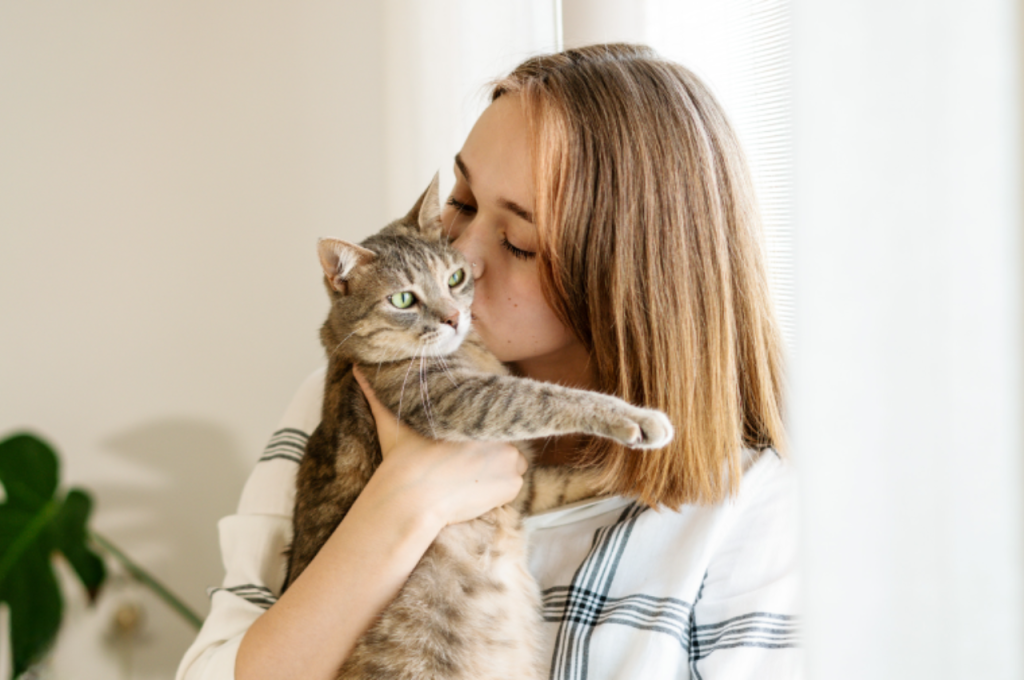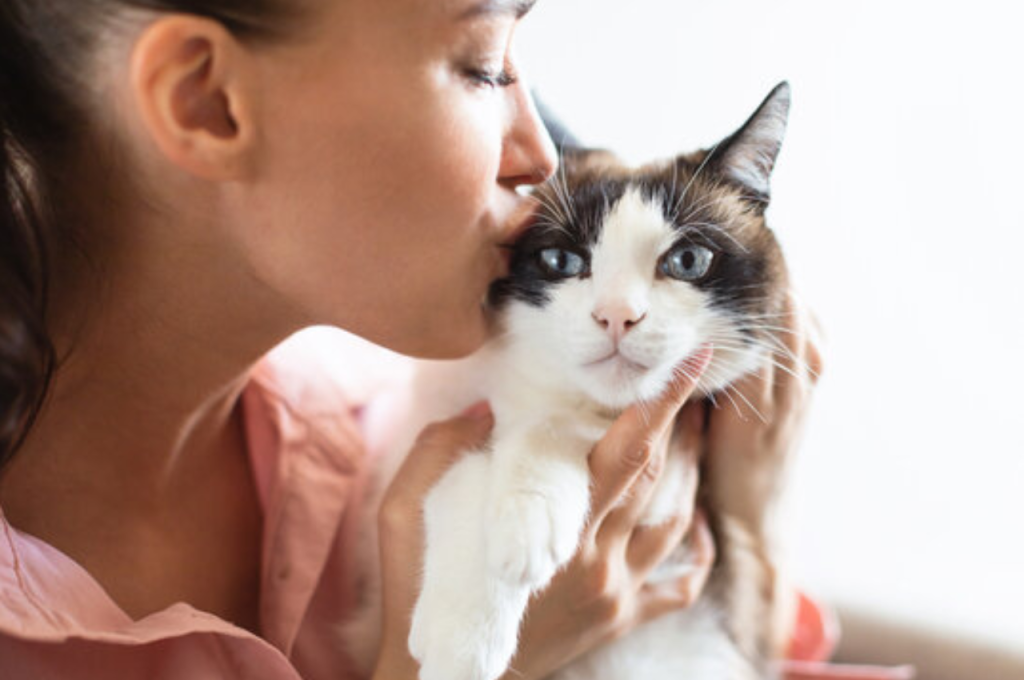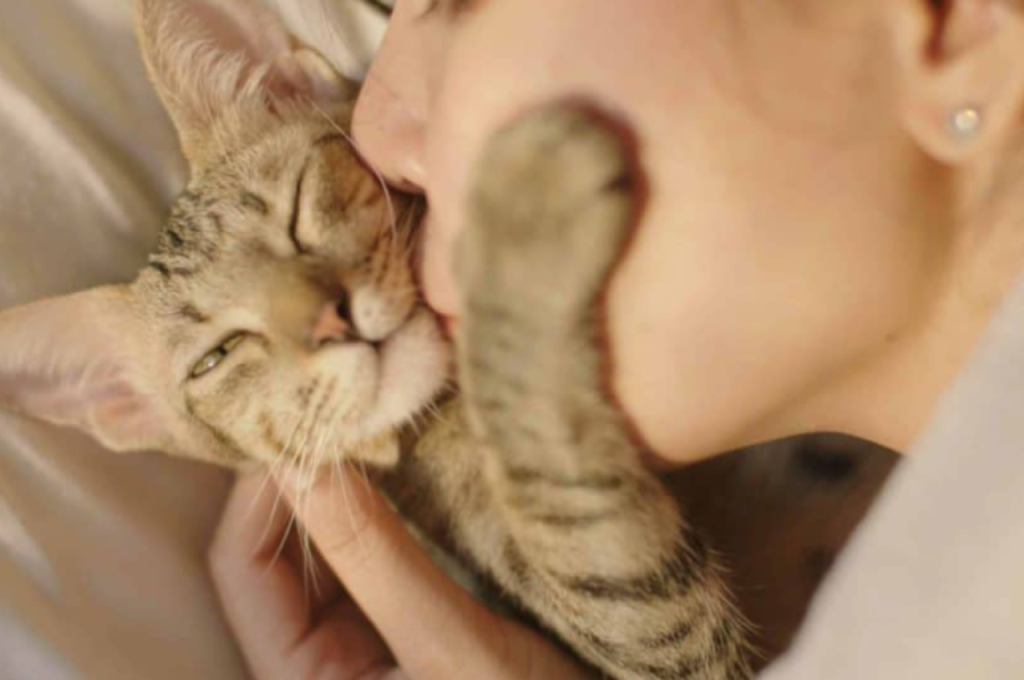Yes, cats do understand kisses, as they interpret them as a form of affection from their human companions. Building a bond through kisses strengthens the relationship between cats and their owners.
Cats perceive kisses as grooming gestures, similar to how they groom each other to show affection and establish social bonds. This non-verbal communication helps create a sense of security and trust between cats and their owners. While not all cats may enjoy kisses, many appreciate the closeness and attention it signifies.
Understanding their individual preferences and respecting their boundaries is crucial to maintaining a positive and loving connection with our feline friends.
Exploring Feline Behavior
Feline behavior is a fascinating subject that encompasses a wide range of instincts, preferences, and personality traits. Cats, with their enigmatic nature, exhibit a myriad of behaviors that intrigue and fascinate pet owners worldwide. From their unique hunting instincts to their affectionate displays and territorial behaviors, understanding feline behavior offers valuable insights into the complex world of our beloved companions. Here are some key aspects to explore:

Instinctual Communication
Cats rely on various forms of body language to communicate their feelings and needs effectively. Through purring, meowing, and tail movements, they convey a wide range of emotions and intentions. Purring is often associated with contentment and relaxation, but it can also indicate pain or distress in some cases.
Social Bonds
Cats establish deep bonds with their owners over time, often through a combination of physical affection and shared experiences. This bond is built on trust, companionship, and mutual understanding. Through regular interactions, such as petting, playing, and spending quality time together, cats and their owners develop a strong emotional connection.
The Significance of Kisses in Human Culture
Have you ever wondered why kisses hold such a significant place in human culture? This seemingly simple act of pressing one’s lips against another’s has immense meaning across various cultures and historical periods. Let’s delve into the cultural differences and historical context of kisses to understand their significance in our everyday lives.
In different parts of the world, the act of kissing can hold different meanings and portray a wide spectrum of emotions. Here are a few cultural differences when it comes to kisses:
- In Western cultures, kisses are commonly used as a sign of affection, love, or greeting between family members, friends, and partners.
- On the other hand, some Eastern cultures consider kissing in public to be inappropriate or even disrespectful.
- In certain African cultures, it is customary to show respect to elders by touching their forehead with their lips as a form of a kiss.
To grasp the significance of kisses, we must explore their historical context. Here, we will touch upon a few noteworthy points:
- Throughout history, kisses have been used to establish alliances and seal agreements between individuals, families, and even nations.
- In ancient Rome, a kiss on the lips was considered a formal greeting and a sign of fidelity.
- The Middle Ages marked a transition in the perception of kisses, where they came to symbolize romantic love and passion.
- During the Victorian era, public displays of affection, including kissing, were suppressed due to societal norms and etiquette.
Understanding the cultural differences and historical context behind kisses helps us appreciate their significance in human culture. From expressions of love and affection to formal greetings and acts of respect, kisses have evolved and retained their place as a powerful and emotional act across time and cultures.
Interpreting Cat Reactions to Kisses
Cats are known for their mysterious and sometimes enigmatic behavior, leaving many cat owners wondering if their feline companions understand and appreciate the affectionate kisses they receive. Interpreting cat reactions to kisses can provide insights into whether cats appreciate this form of affection or if it may be causing them discomfort. By observing their body language cues and vocalizations, we can gain a better understanding of how our furry friends truly feel about kisses.
Body Language Cues
Cats communicate primarily through body language, and understanding their cues can give us valuable insights into their feelings. When it comes to kisses, observing their body language can help determine if they enjoy this form of affection or if it causes them stress. Keep an eye out for the following body language cues:
- Tail position: If your cat’s tail is erect and relaxed while receiving kisses, it is a positive sign that they are comfortable and may be enjoying the attention.
- Soft purring: Purring is a classic sign of contentment in cats, indicating that they are comfortable and relaxed.
- Slow blinking: When a cat looks at you and slowly blinks their eyes, it is a sign of trust and affection. If they do this while receiving kisses, it suggests they are enjoying the interaction.
- Relaxed body posture: If your cat has a relaxed and loose body posture while being kissed, it indicates they are comfortable and not experiencing any distress.
- Head rubbing: If your cat rubs their head against you or nuzzles your face while receiving kisses, it is a clear sign that they enjoy your affection.
Vocalizations
Cats also communicate through vocalizations, and their sounds can provide insights into their feelings about kisses. Pay attention to the following vocalizations:
- Purring: Cats often purr when they feel content and relaxed, so if they purr while you’re kissing them, it suggests they are enjoying the attention.
- Meowing: Some cats may meow in response to kisses, but the meaning can vary. It could indicate excitement, discomfort, or a desire for more attention. Assess the overall body language and other cues to interpret the meowing accurately.
- Hissing or growling: If your cat hisses or growls while receiving kisses, it is a clear indication that they are feeling threatened or uncomfortable. Respect their boundaries and give them space.
Scientific Insights into Cat Behavior
Scientific research into cat behavior provides fascinating insights into the cognition and sensory perception of our feline companions. Understanding how cats interpret and respond to human affection, such as kisses, can shed light on the complex nature of these enigmatic creatures. Here, we delve into the scientific evidence behind the question: Do cats understand kisses?

Studies On Cat Cognition
Studies on cat cognition have revealed intriguing information about their ability to comprehend human interactions, including displays of affection. Research has demonstrated that cats possess the capacity to recognize and respond to human facial expressions, indicating a level of emotional intelligence.
Role of Olfactory Senses
Cats rely heavily on their olfactory senses to interpret the world around them. When humans kiss their cats, the olfactory component of the interaction becomes significant. Cats use their sense of smell to gather information, and a kiss may convey various scents that influence their behavior and perception of the interaction.
Comparing Affection Across Species
When it comes to affection, different species display their love and attachment in various ways. Understanding these differences can help us appreciate and nurture our relationships with our animal companions.
Cross-species Understanding
Cats and humans express affection differently but mutual understanding can still occur.
While humans share feelings through kissing, cats show affection through behaviors like purring and headbutting.
Understanding each other’s communication cues helps bridge the gap in cross-species affection.
Behavioral Responses
Cats may not interpret kisses the same way humans do, but they appreciate the sentiment.
Common behavioral responses from cats include purring, rubbing against you, or kneading.
Observing your cat’s reactions can help gauge their comfort level with physical affection exchanges.
Misconceptions About Cat Responses to Affection
Cats’ understanding of kisses and other expressions of affection is often misunderstood. Many cat owners assume their feline friends don’t reciprocate or comprehend these gestures, leading to misconceptions about their responses to affection. It’s time to debunk these myths and explore the truth behind cat behavior.
Anthropomorphic Interpretations
Humans often project their own emotions and interpretations onto their pets, assuming that cats perceive affection in the same way we do. This anthropomorphic viewpoint can lead to misunderstanding cat behaviors and responses. It’s important to recognize that cats have their unique ways of expressing and perceiving affection.
Myths vs. Reality
- Cats don’t love their owners
- Cats are aloof and independent
- Cats don’t understand kisses or physical affection
Contrary to these common misconceptions, cats are capable of forming strong bonds with their owners and can exhibit affectionate behaviors. Understanding the reality behind these myths can help foster better relationships with our feline companions.
Building Strong Bonds with Your Cat
Building a strong bond with your cat is a rewarding experience that enhances both your lives. Here are some tips to help foster a deep and meaningful connection with your feline friend:
Understanding Individual Preferences
Cats may understand kisses based on their individual preferences and body language cues.
Each cat has its unique way of showing affection, so pay attention to how your cat reacts to kisses.
Some cats may enjoy gentle forehead kisses, while others may prefer chin scratches or gentle petting.
Alternative Ways of Bonding
In addition to kisses, there are alternative ways to strengthen your bond with your cat.
- Playing interactive games together
- Providing cozy spots for them to relax
- Engaging in grooming sessions
- Using positive reinforcement training
Experiment with different bonding activities to find what resonates the most with your feline companion.
Enhancing Communication with Your Feline Companion
Understanding your cat’s behavior and finding effective ways to communicate with them can deepen the bond between you and your feline friend. While cats may not understand kisses in the same way humans do, there are other ways to enhance communication with them.

Observational Learning
Cats are highly observant creatures, constantly assessing their surroundings and the behavior of those around them. By paying attention to your cat’s body language and vocal cues, you can better understand their needs, emotions, and desires.
- Observe your cat’s ears, tail, and whiskers to gauge their mood. For example, when their ears are forward and relaxed, it indicates a calm and content state.
- Watch your cat’s tail movements. A quick flicking tail may indicate annoyance or agitation, while slow waving motions can show relaxation.
- Take note of vocalizations such as meowing, purring, hissing, and chirping. Each sound carries different meanings, and understanding them can help you respond appropriately.
Responsive Interactions
Responsively interacting with your cat can help establish trust and strengthen your bond. Here are some tips for enhancing communication through responsive interactions:
- Engage in playtime with your cat using toys that mimic prey-like movements. This not only provides physical stimulation but also taps into their instincts.
- Respond to your cat’s cues for attention. If they approach you seeking affection, make sure to provide gentle petting and attention, respecting their boundaries.
- Offer positive reinforcement through treats, praise, or a soothing voice when your cat exhibits desired behavior. This encourages them to repeat those actions in the future.
Enhancing communication with your feline companion goes beyond kisses. By employing observational learning and responsive interactions, you can build a strong and meaningful connection with your cat.
Conclusion
While cats may not fully understand the concept of kisses as humans do, they can still perceive the love and affection behind it. Communication between cats and humans relies more on non-verbal cues and body language. So, although your cat may not reciprocate with a kiss, rest assured that they can feel your love through your actions and interactions.
Understanding and respecting their boundaries is key to building a strong bond with your feline friend.
